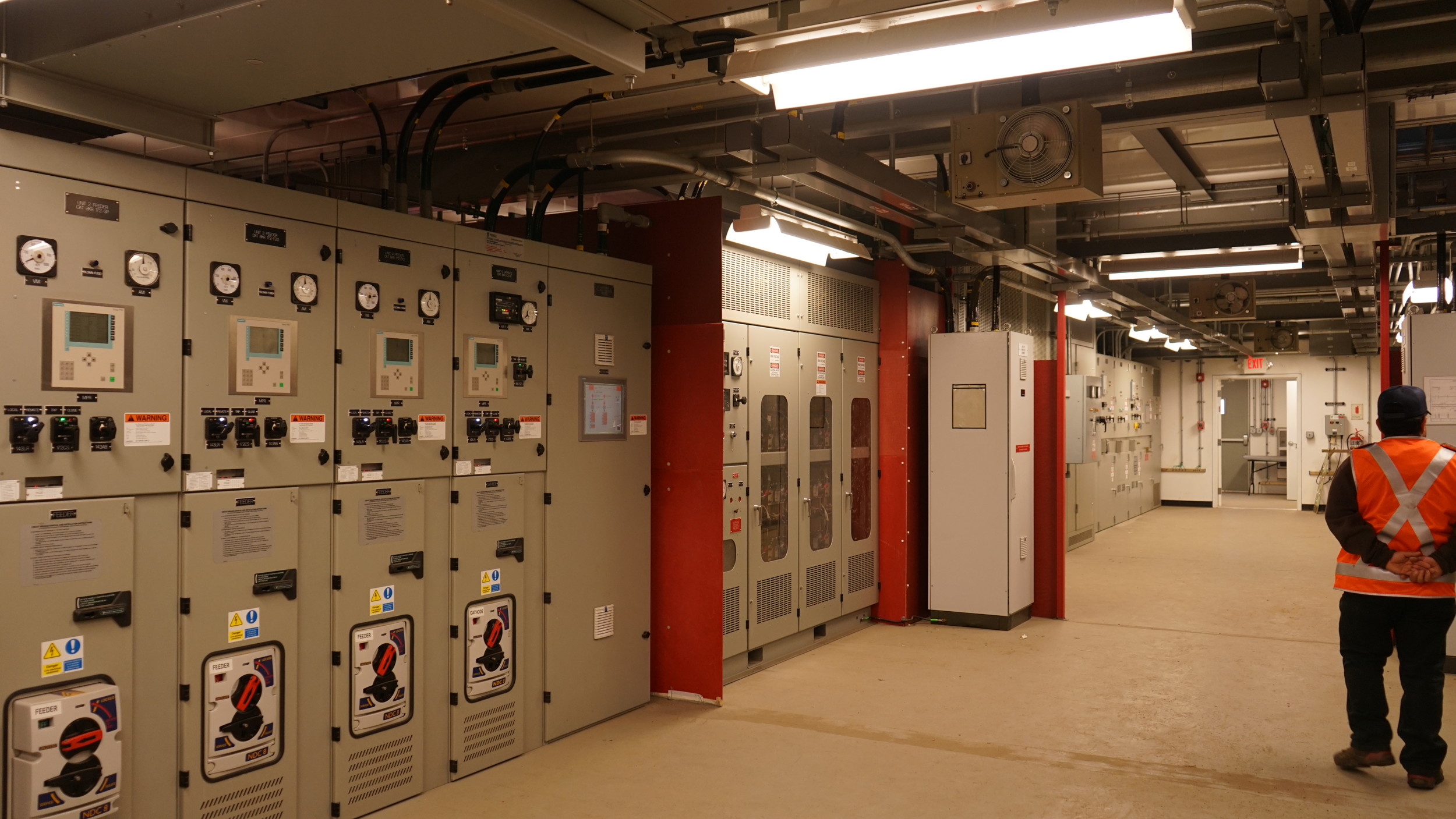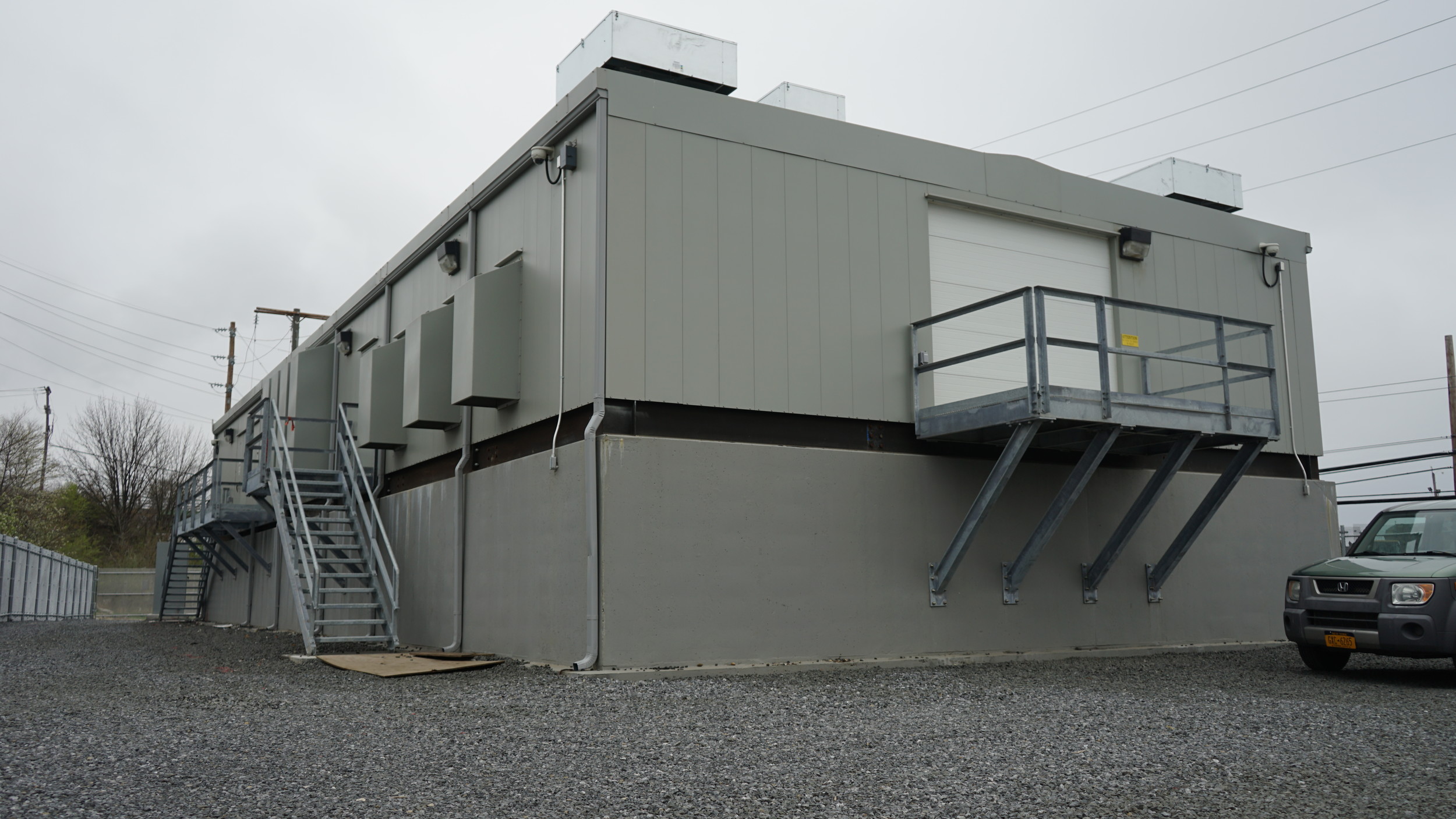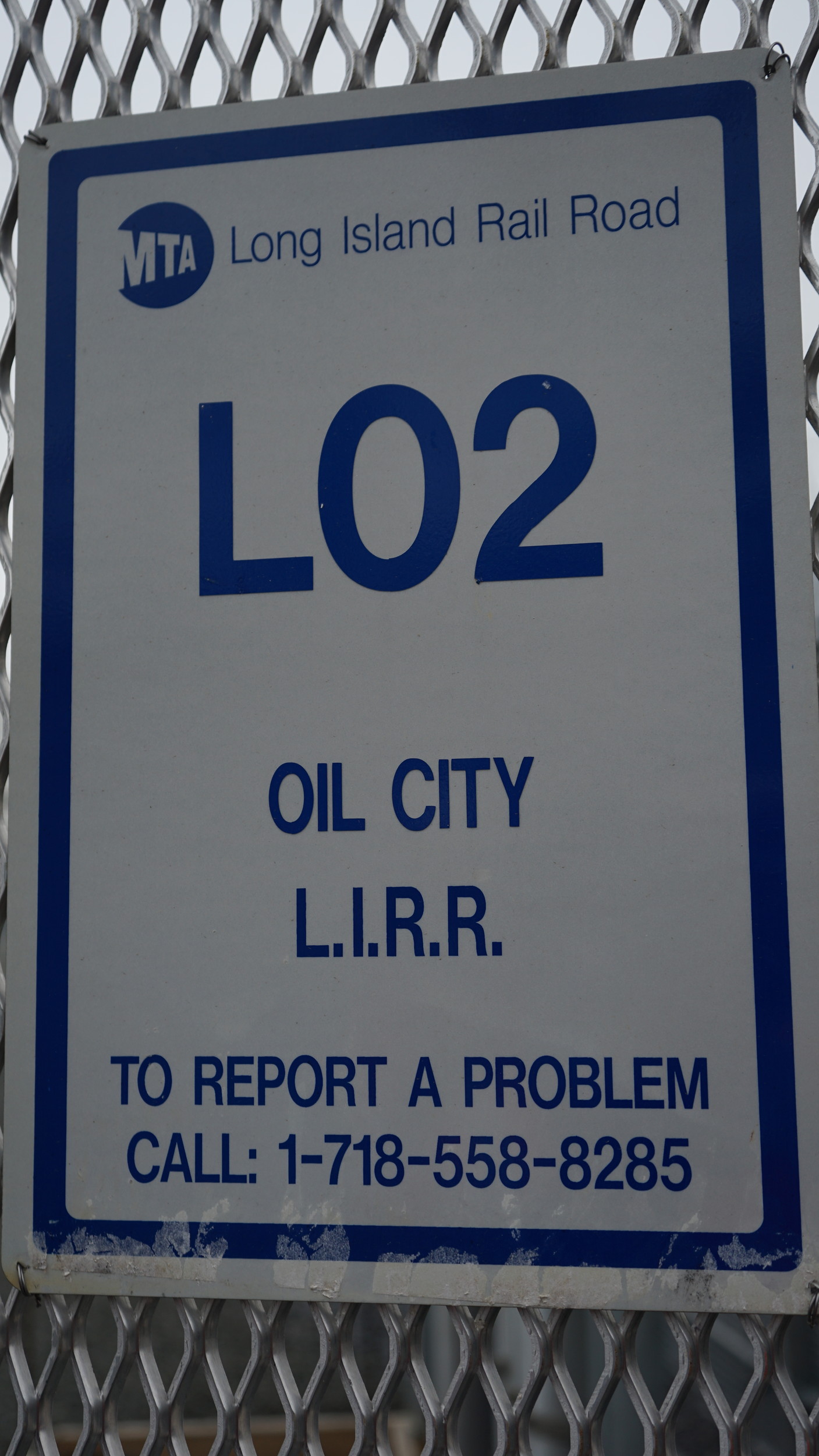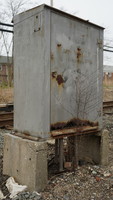Long Beach Branch LIRR projects aimed at protecting against flooding
Long Island Rail Road officials offered a glimpse into its revamp of the Long Beach branch on April 21, which, when completed, would allow rail service to operate uninterrupted in the face of severe storms and flooding.
Divided into three components, the projects — combined to cost $131 million — were a response to infrastructure damage from Hurricane Sandy, and the increasing frequency of extreme coastal weather events due to climate change, officials said.
The first is a $53 million project to replace three power substations along the line, improving flood resiliency, as well as installing computer systems that allow railroad workers to better monitor the flow of electricity to the tracks.
The new gray 35-by-90-foot prefabricated structures sit on raised concrete foundations, including one on Lawson Boulevard near the East Rockaway train station. They — like all flood hardened railroad equipment — sit four feet above where floodwaters have been estimated to rise, according to Thomas McHugh, director of the LIRR’s department of program management.
Last month, LIRR officials showcased the substation in Oil City, Oceanside, which was completed in January. The structures are spaced roughly two miles apart along the tracks, and the entire project — about 80 percent complete — is estimated to be finished by early next year, with final work being performed on the Long Beach substation, McHugh said.
The second project involves the replacement and hardening of underwater electrical cables that run alongside and underneath Wreck Lead Bridge, which spans Reynolds Channel from Island Park to Long Beach. While observing the work during a tour last month, McHugh said there were divers below the surface placing concrete slabs over the underwater cables to prevent them from drifting due to high water currents.
In addition to cable replacement, housing for where the cables emerge onto land is being improved to better protect against saltwater intrusion. McHugh said there would be no interruption in service when the new cables are switched online, and that the transition would be “pretty much seamless.” The project is estimated to be complete by July, and is expected to cost $13 million, he added.
The third and final piece of work slated for the branch is a complete replacement of its switching, signaling, communications and third rail equipment. McHugh said these systems were “totally inundated with water” during Sandy, and that workers had found fish inside the boxes that house them.
In many places along the tracks, including the area around Wreck Lead Bridge, the raised platforms that would support the new equipment have already been constructed. However, according to McHugh, the entire system needs to be installed before it can be turned on. This work is estimated to be 45 percent complete, and according to McHugh, should be finished by December 2019.

 54.0°,
Fair
54.0°,
Fair 













